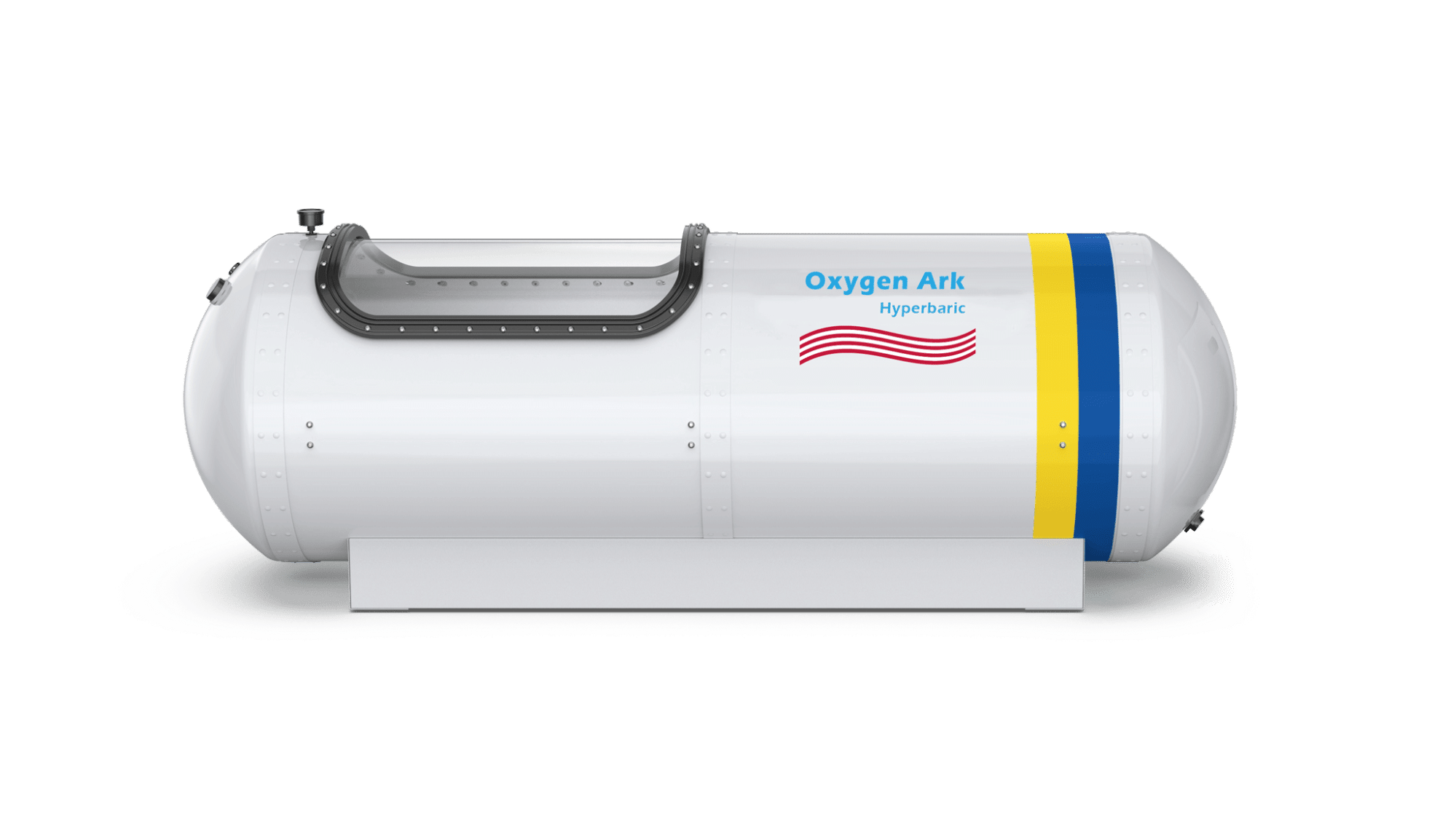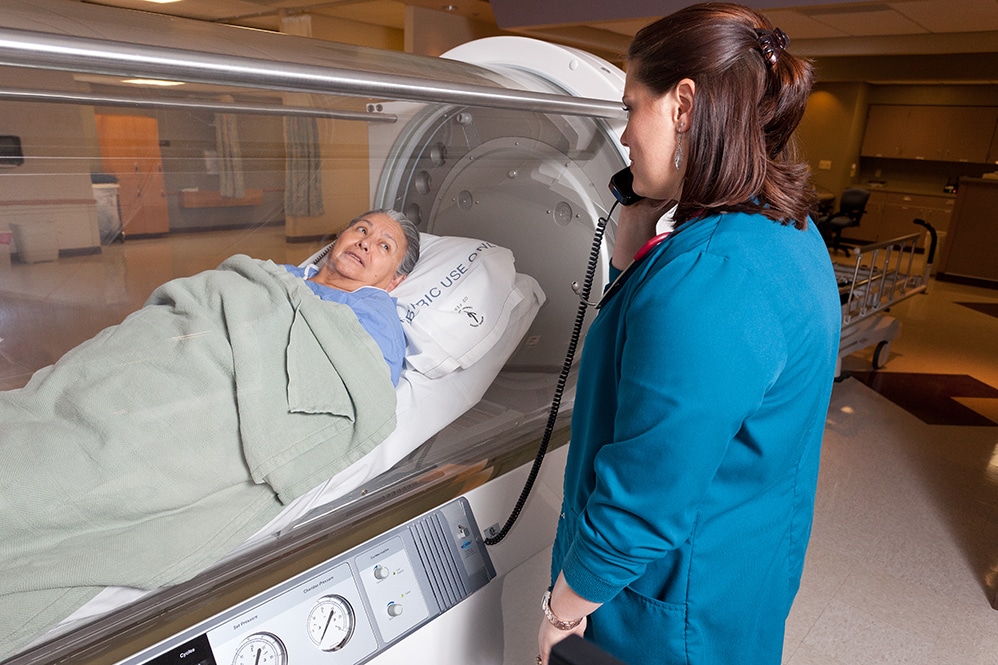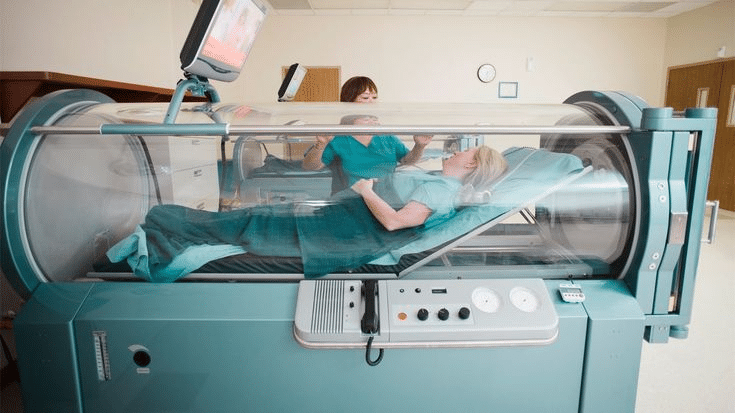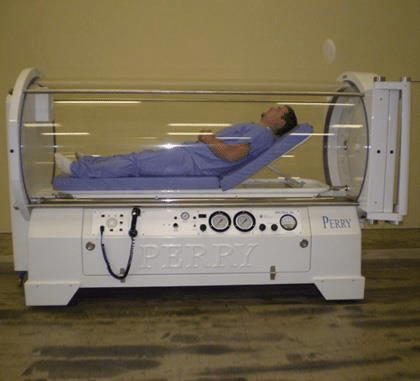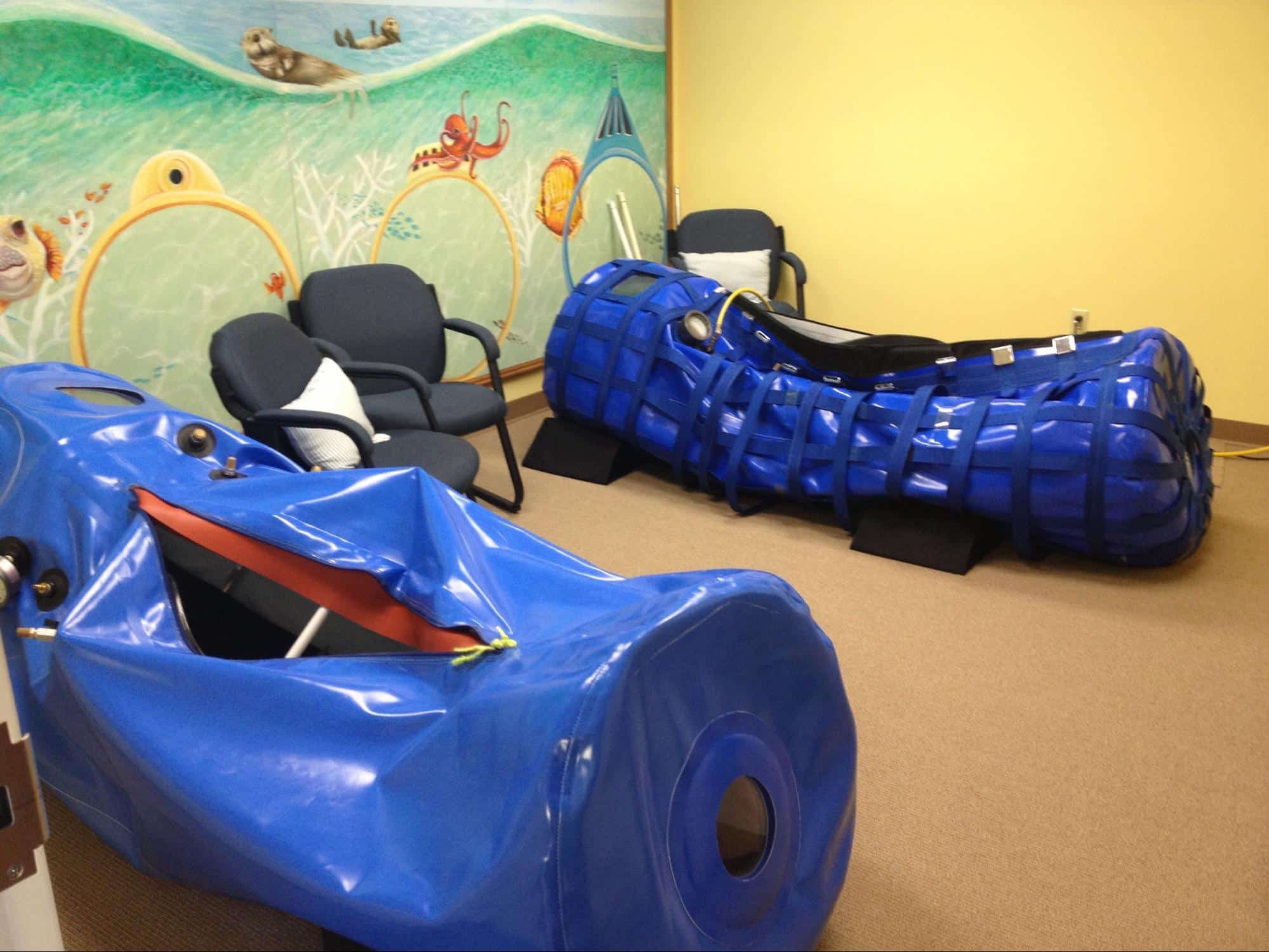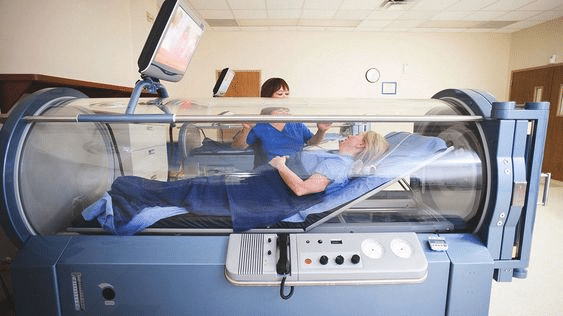
Source: Pinterest
Amidst the relentless pursuit of medical breakthroughs, a singular device has emerged as a beacon of hope—a remarkable contraption known as the hyperbaric chamber.
A hyperbaric chamber serves as a medical apparatus which raises the atmospheric pressure around a patient’s body. This allows the patient to breathe in more oxygen, which can help to heal wounds, reduce inflammation, and fight infections. Hyperbaric oxygen therapy (HBOT) refers to the therapy in a chamber with increased atmospheric pressure.
In this article, we will delve into the working principles, applications, benefits, and safety considerations associated with hyperbaric chambers. Join us on an exploration of hyperbaric chambers, where we unlock the mysteries that lie beneath the surface, revealing a world where healing takes on an entirely new meaning.
Understanding Hyperbaric Chambers
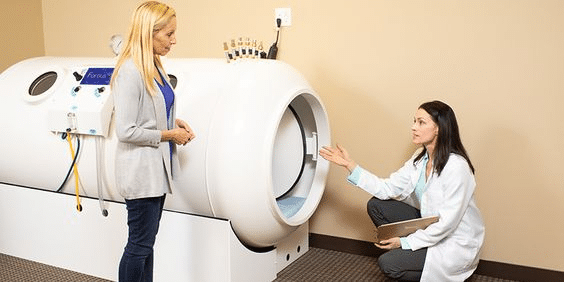
Source: Pinterest
A hyperbaric environment refers to a condition in which the air pressure is higher than the atmospheric pressure at sea level. In a hyperbaric chamber, this increased pressure can be achieved by either compressing the air inside the chamber or by using pure oxygen.
There are two main types of hyperbaric chambers: monoplace and multiplace chambers. Monoplace chambers are designed to accommodate one person at a time and are typically transparent, allowing the patient to see outside.
Multiplace chambers, on the other hand, are larger and can accommodate multiple individuals, such as patients and medical personnel. In multiplace chambers, the occupants breathe in the chamber’s pressurized air or oxygen through masks or hoods.
Safety precautions are of utmost importance during hyperbaric treatments. Before entering the chamber, patients are screened for any conditions that may make hyperbaric therapy unsafe, such as untreated pneumothorax, certain types of lung disease, or recent ear surgery.
During hyperbaric treatments, patients are closely monitored for adverse effects, such as ear discomfort, sinus pain, or vision changes. Safety protocols include regular communication with the patient, maintaining appropriate pressure levels, and ensuring proper ventilation and oxygen supply within the chamber.
How Does a Hyperbaric Chamber Work?
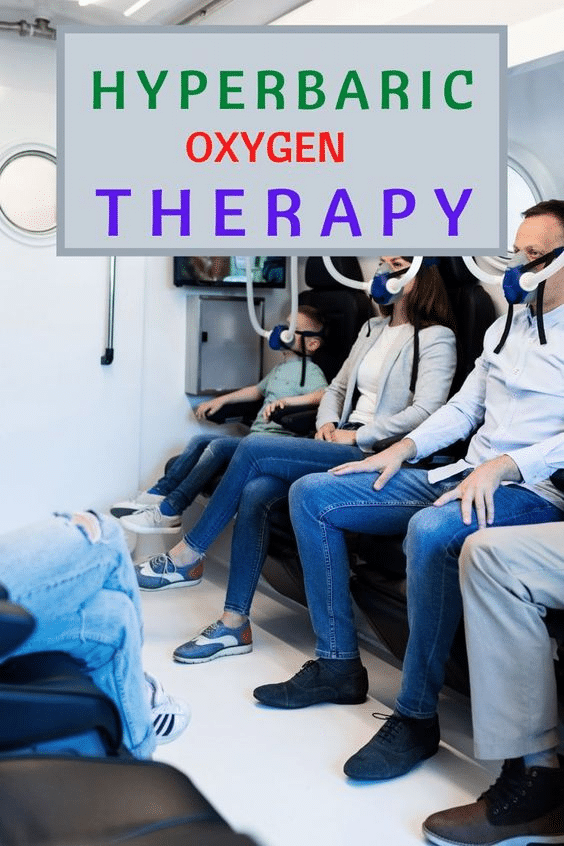
Source: Pinterest
Hyperbaric chambers work by subjecting individuals to increased atmospheric pressure, which has physiological effects on the body. The increased pressure allows for a higher concentration of oxygen to dissolve in the bloodstream. This higher oxygen presence delivers numerous advantages. For example improved tissue oxygen levels, improved healing of wounds, and lowering of inflammation levels.
Hyperoxygenation refers to the process of delivering a higher level of oxygen to the body’s tissues. In a hyperbaric chamber, the elevated atmospheric pressure causes the lungs to take in a greater amount of oxygen with each breath. The increased oxygen is subsequently carried through red blood cells. The molecules attach onto the oxygen particles and move them across the entire body. This results in improved oxygenation in the body, in regions experiencing decreased blood circulation.
By providing a controlled environment and elevated oxygen concentrations, hyperbaric chambers are specifically created to elevate the oxygen saturation in the bloodstream, resulting in tissue restoration and lowers inflammation. This distinct mechanism of hyperoxygenation sets the stage for accelerated wound recovery, enhanced tissue regeneration, and boosts cellular activity in various medical conditions.
Applications of Hyperbaric Chambers
Medical Applications of Hyperbaric Chambers
1. Decompression Sickness and Diving Injuries
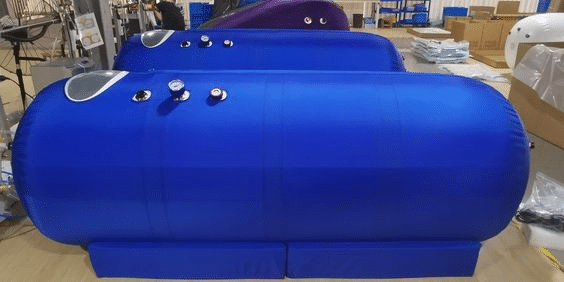
Source: Pinterest
Hyperbaric chambers are crucial in treating decompression sickness, also known as “the bends.” This condition occurs when dissolved gases, such as nitrogen, form bubbles in the bloodstream due to rapid ascent during scuba diving or other pressure activities. Hyperbaric therapy helps to dissolve these bubbles and reliieve symptoms.
2. Carbon Monoxide Poisoning and Smoke Inhalation
Hyperbaric oxygen therapy (HBOT) is effective in treating carbon monoxide poisoning and smoke inhalation injuries. It quickly removes carbon monoxide from the blood and increases tissue oxygenation, which helps the body recover.
3. Wound Healing and Tissue Repair
Hyperbaric chambers play a crucial role in promoting wound healing, particularly in cases of non-recovery wounds, diabetic ulcers, and tissue damage resulting from radiation therapy. The increased oxygen levels in the chamber stimulate cellular metabolism, enhance collagen production, and promote angiogenesis, leading to improved recovery outcomes.
4. Infections and Non-Healing Wounds
Hyperbaric therapy is beneficial for treating certain types of infections, particularly those caused by anaerobic bacteria. The improved oxygen stages create an inhospitable environment for these bacteria, improving the effectiveness of antibiotics and supporting the body’s immune response. Hyperbaric chambers are also used to treat non-healing wounds, such as those associated with peripheral arterial disease or compromised blood flow.
5. Potential Applications in Neurology and Other Fields
Research is ongoing to explore the potential applications of hyperbaric chambers in neurology, including traumatic brain injuries, stroke, multiple sclerosis, and neurodegenerative diseases. Preliminary studies endorse that HBOT may have neuroprotective outcomes and useful resource in tissue restore in those situations. Hyperbaric therapy is also being investigated for conditions such as radiation necrosis, osteomyelitis, and certain types of cancer.
Non-Medical Applications of Hyperbaric Chambers
1. Sports and Athletics

Source: Pinterest
Some athletes and sports teams use hyperbaric chambers for enhanced performance and recovery. The increased oxygen availability in the chamber is believed to aid in muscle recovery, reduce fatigue, and improve overall athletic performance.
2. Industrial Applications
Hyperbaric chambers are utilized in certain industries, such as offshore oil and gas, to simulate the high-pressure conditions that workers may encounter. These chambers allow for testing and training to ensure safety and proper procedures in high-pressure environments.
3. Aerospace and Aviation
Hyperbaric chambers are employed in the aerospace and aviation industries for training purposes. They can simulate high-altitude conditions, allowing pilots and astronauts to experience and prepare for the effects of low atmospheric pressure and reduced oxygen levels.
4. Veterinary Applications
Hyperbaric chambers are also used in veterinary medicine. They can be employed for the treatment of various conditions in animals, such as wound healing, tissue repair, and certain respiratory disorders.
5. Research and Experimental Applications
Hyperbaric chambers serve as important tools in scientific research and experimentation. They provide controlled environments for studying the effects of increased pressure and oxygen levels on various biological and physical systems. These chambers are used to investigate topics such as tissue physiology, diving physiology, and the impact of hyperbaric conditions on organisms.
The Hyperbaric Chamber Experience
1. Preparation and Procedure
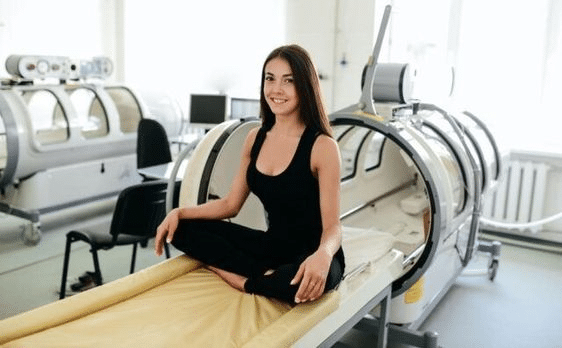
Source: Pinterest
Before entering the hyperbaric chamber, you may need to change into the clothing provided and remove any items that may pose a safety hazard. Once in the room, you will normally lie down or sit comfortably. The chamber will be closed, and the pressure will gradually increase to the set level. You may experience a sensation of fullness in your ears, similar to what you feel during air travel or diving, which can be relieved by swallowing or yawning.
Duration and Frequency
The duration of a hyperbaric treatment session can vary, but it typically lasts between 60 to 120 minutes. The number of sessions required depends on the condition being treated, and can range from a few sessions to several weeks. Your healthcare provider will determine the appropriate treatment plan based on your specific needs.
Potential Side Effects and Risks
Although hyperbaric therapy is generally considered safe, there are potential side effects and risks. These may include temporary changes in:
- Vision
- Lightheadedness
- Fatigue
- Ear or sinus discomfort
- Claustrophobia.
In rare cases, more serious complications such as oxygen toxicity or barotrauma (injury caused by changes in pressure) may occur. However, these risks are minimized by following safety protocols, proper room operation, and careful patient monitoring.
Pros and Cons of Hyperbaric Chambers
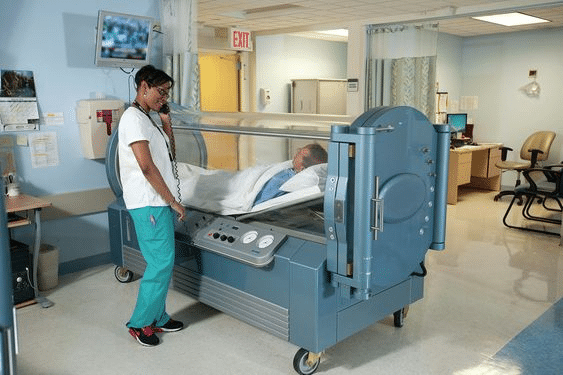
Source: Pinterest
Pros:
- Effective Oxygenation and Tissue Healing: Hyperbaric chambers have been shown to deliver more oxygen to the body, increasing tissue oxygenation and promoting wound healing
- Treatment of medical conditions: Hyperbaric therapy has been very successful in treating many health conditions such as diabetes, dementia and radiation damage
- Non-invasive and safe treatment: Hyperbaric chambers are a valid method of non-invasive treatment, and this surgery is necessary and if used under proper medical supervision, often has very few risks and side effects, making it a completely safe treatment for some individuals
- Improved quality of life: By reducing inflammation, healing muscles, and increasing oxygenation, hyperbaric chambers can improve patient quality of life and help improve physical health, reduce symptoms and in a variety of conditions in some cases, rapid treatment.
Cons:
- Cost: Hyperbaric therapy can be very expensive, and general insurance coverage may not cover the cost.
- Access: In some areas, access to several rooms may be limited, preventing certain individuals from accessing it.
- Potential risks and side effects: Although hyperbaric therapy is generally safe, there are notable risks and side effects associated with elevated levels of oxygen and pressure These can be variable transient loss of vision, hearing and muscle weakness, and in some cases more severe complications.
Conclusion
As we conclude our journey into the world of hyperbaric chambers,we’re amazed at the immense potential of this device. From treating chronic wounds, to treating aquatic injuries, and enhancing athletic performance, its impact on medicine and beyond is undeniable. With continued research and development, hyperbaric chambers continue to open the door to a better future.
By understanding hyperbaric chambers and their applications, individuals can make the right decisions about their use and health care professionals can provide the right treatment options.

